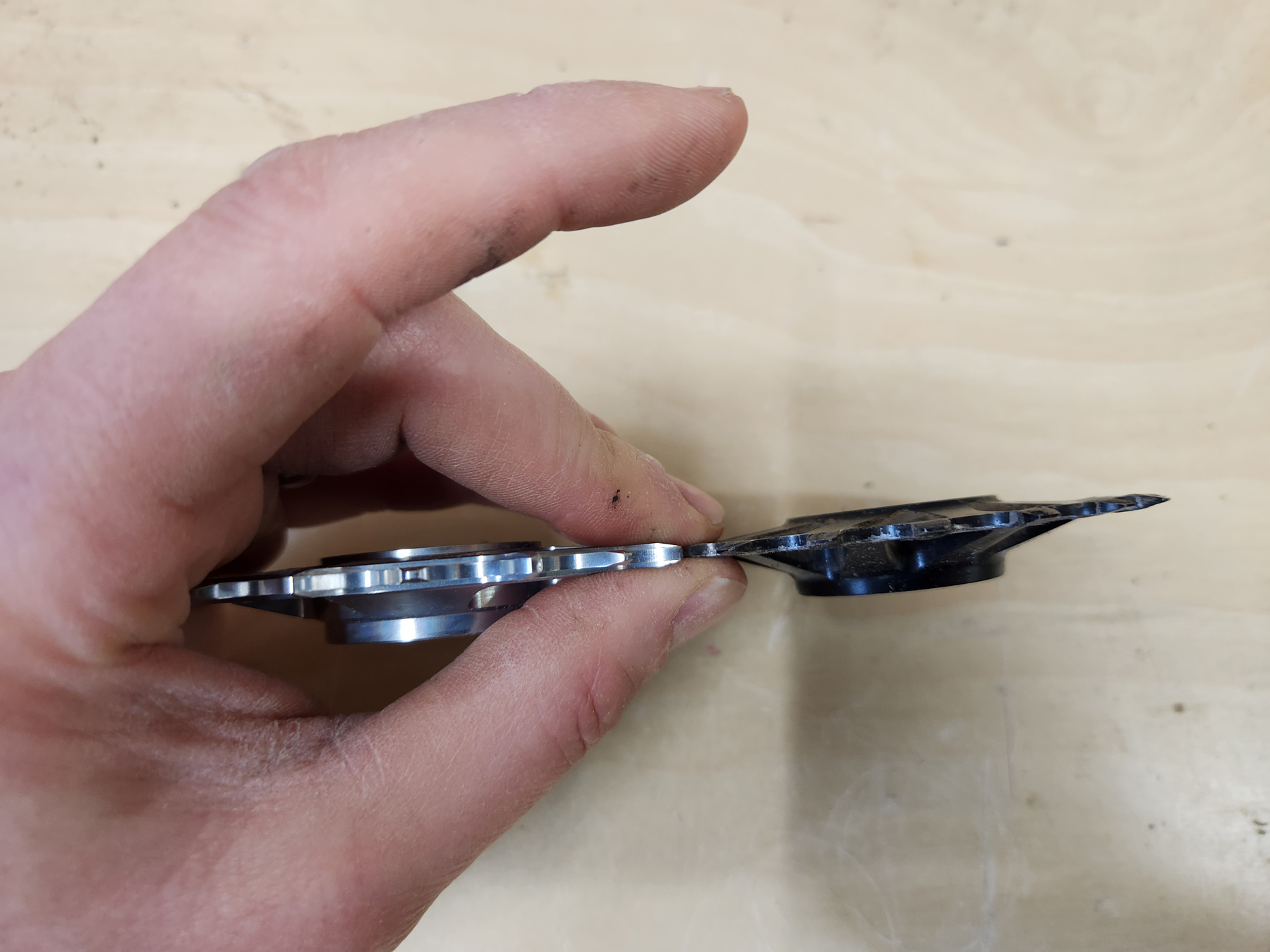North Shore Billet Idler Pulley (Norco Range HP)
MSRP: $59 w/ bearing
Blister’s Measured Weight: 52g w/ bearing
Reviewer: 5’9”, 160 lbs (175 cm, 72.5 kg)
Test Locations: Montana, British Columbia
Test Duration: 1 year

Intro
North Shore Billet has produced an array of idler pulleys that fit most of the common high-pivot bikes on the market. Since idlers take a fair amount of stress and can wear out quite a bit quicker than a chainring or cassette, having some aftermarket options for replacement is a welcome development. As per usual for NSB, their idlers are machined in their facility in Whistler, BC, and we’ve now spent a full year on the Norco Range version. So how did it perform and how is it wearing? Let’s dive in.

Design
The idler for my Norco Range is only available in 7075 T6 aluminum, but NSB offers some of their idlers in steel as well. The steel idlers have the same tooth profile as their aluminum counterparts but should last longer (and, of course, weigh a bit more).
The basic dimensions are identical when comparing the NSB idler to the stock idler that came on my Range. They’re both 18-tooth idlers, they use the same size bearing, and the thickness and alignment of the teeth are identical. This means that bolting up the NSB idler is a quick and easy affair; there’s no need to adjust the chainline or alignment.
The primary difference between the NSB idler and the stock idler from Range is the tooth profile -— the NSB has a more aggressive narrow-wide pattern, similar to what you see on a lot of chainrings. It’s worth noting that the Range uses an 18t idler, which allows for that narrow-wide tooth profile. NSB idlers for bikes that require an odd number of teeth (like the Trek Slash’s 19t idler) don’t have the narrow-wide tooth profile.
The NSB idler for my Range uses the same size bearing as the stock idler (an Enduro 6902), but the NSB kit ships with an LLU bearing, whereas the stock bearing is an LLB. An LLU Enduro bearing is sealed tighter than an LLB, meaning that it keeps dirt and grime out more effectively, but has a bit more drag and rolling resistance. As a practical matter, I don’t think I can tell the difference while pedaling.


NSB has indicated that they are revising some of their idlers, which may reduce or eliminate the play that I found. As of writing, they hadn’t yet released a revised version of the idler for the Range, though.
After spending quite a while riding the NSB idler, I’ve concluded that the small amount of play doesn’t really matter. It doesn’t seem ideal, and theoretically, it might reduce bearing life, but on the trail, I don’t notice it at all. And in fact, the small amount of play might allow the idler to better align with the varying chain angles from different gears on the cassette. I’m not sure if that actually matters, though.
In terms of friction and noise, the NSB idler seems similar to the stock idler. As with every other idler I’ve ridden, it benefits greatly from having a well-lubed chain. For both the stock and NSB idlers, I’d call both the noise and drag noticeable, but not overly concerning. The narrow-wide tooth profile probably retains the chain better, but I can’t say I had issues with chain retention on the stock idler. The idler on the Range is mostly enclosed by a chain guide, so dropping a chain off the idler would be pretty difficult. In terms of wear, I have nothing to report. After a season on the idler, there is no discernible wear — it looks more or less like new (albeit dirtier).

Bottom Line
The NSB idlers offer a nice alternative to the stock idlers on quite a few high-pivot bikes. The NSB idlers mount up easily and look nice. While the little bit of play I had in my idler seems potentially concerning, I didn’t find it to negatively impact performance in any way, and so far the bearing is still spinning smoothly. Particularly if you’re having problems with chain retention or longevity of a stock idler, the NSB options are a great alternative.
